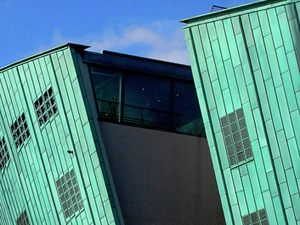The State of Green Business -- and Building Efficiency

Well, they've done it again . . .
The crack editorial team here at Greener World Media has completed the third annualState of Green Businessreport or SOGB (rhymes with soggy, which is quite appropriate for the slushy Eastern seaboard). In addition to releasing the 60+ page report, somehow these superhumans managed to put on two very successfulState of Green Business Forumsin San Francisco and Chicago.
Overall, SOGB strikes an optimistic note: “[W]e were pleasantly surprised by what we found. First and foremost, green business activity did not go away amid the harsh economic environment. It survived -- and even thrived.”
But the optimism is leavened with a dose of reality: “In many cases, progress is evident, though not necessarily at the scale and speed needed to effectively address climate change, water shortages, resource scarcity and the toxicity of consumer products, among other pressing issues.”
The GreenBiz Index, which measures relative progress across twenty issues on a “Swim” “Tread” and “Sink” scale, showed more Swimming than Sinking, but way more Treading than would be hoped for.
AsJoel Makower reports, energy efficiency, particularly in buildings, went swimmingly in 2009, in part due to the emphasis in the stimulus package and the outlook for 2010 is likely to be better since the bulk of the non-bailout stimulus spending will hit the streets this year.
At the Chicago SOGB Forum in Chicago,C. David Myers, Johnson Controls' president for building efficiency described how the company has taken advantage of the recent growth opportunities. Myers noted that zero net energy buildings are here today, using the example of the headquarters for Integrated Design Associates (IDeAs), which was an adaptive reuse of a former bank branch in San Jose. Using guaranteed energy performance contact instruments, fairly aggressive efficiency gains can be had for minimal capital outlay on the part of the client, with an immediate positive cash flow.
In spite of progress on energy efficiency and the economy's slowly declining carbon intensity, SOGB gives the movement on climate change a “sink”. Eliminating carbon pollution has not yet been adequately monetized and the infrastructure does not yet exist to reduce carbon emissions on the scale, scope and speed needed to avoid unmanageable global warming. As theGreen Building Market and Impact Reportfound late last year, even under continuing rapid growth of LEED, by 2030 carbon emissions in the buildings sector is expected to drop by less than 10 percent compared with 2009.
But there are other bright spots: At the San Francisco SOGB Forum,Best Buy, Autodesk and Serious Materials showedwhat could be accomplished by applying “software” -- figuratively in the cases of Best Buy and Serious Materials, and literally in the case of Autodesk -- to solve “hardware” issues of the composition of materials and products, business strategy and improving building design. But these companies' integrated approach has synergistic benefits within the firms themselves, as well as with their customer. (Disclosure: I'm an unpaid advisor to Serious Materials.)
As the San Francisco SOGB audience learned fromPeggy Liu, the founder of JUCCCE-- the Joint U.S.-China Cooperation on Clean Energy -- anyone missing China will be missing the greatest green business opportunity around.
But, as I know from personal experience and my involvement with JUCCCE, getting involved there is only for the truly committed. You don't “date” China; you have to marry her. Working with organizations such as JUCCCE is sort of like a combination of speed-dating and matchmaking. JUCCCE is having its Annual Forum in Beijing at the end of June, which will be a very focused event with 30 mayors and 30 state-owned enterprises that are ready to get started immediately on green projects and programs. You can find more information about JUCCCE and the June forum atwww.juccce.com.
最新的Look-Grandpa-I-picked-up-the - 2美元0-bill-you-said-was-fake-but-it's-real! award goes to Cisco DeVries, president of Oakland, Calif.-based company developing thePACE-- that's Property Assessed Clean Energy -- program, and to San Francisco Mayor Gavin Newsom for spearheading the local legislation, which will make $150 million in bonding capacity available to San Francisco property owners beginning March 1. PACE offers low-cost loans, which are attached to the property, not the property owner, thus avoiding financing problems associated with shortened time horizons. PACE-backed funds, which are paid back through a building's property taxes over its lifetime, will be used for free on-site assessments, installations of energy efficient equipment and lighting, and retrofits of municipal buildings.
Rob Watsonis the executive editor ofGreenerBuildings.com. You can reach Rob at[email protected]或在推特上跟随他@KilrWat
Image CC licensed by Flickr usero palsson.




